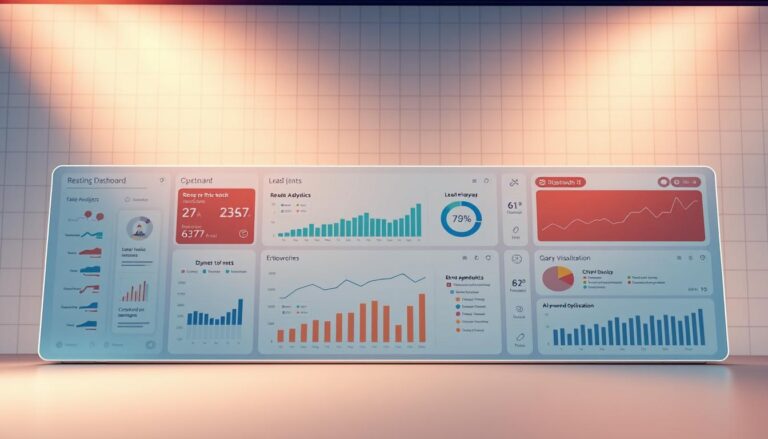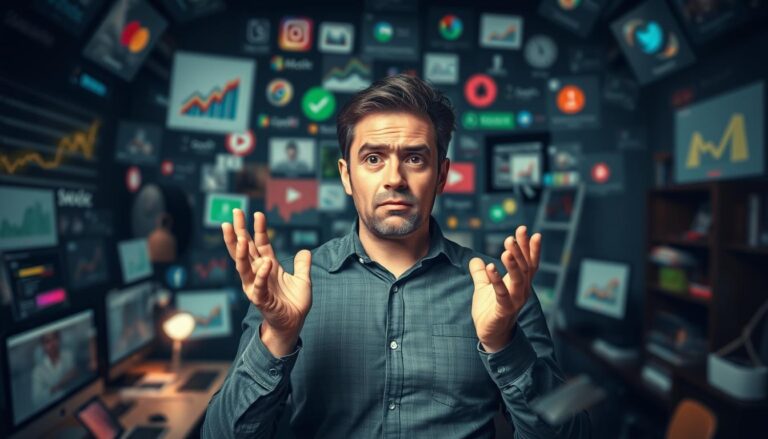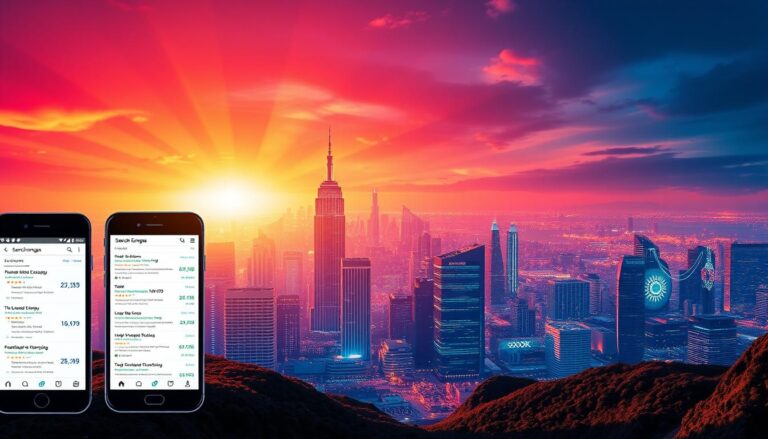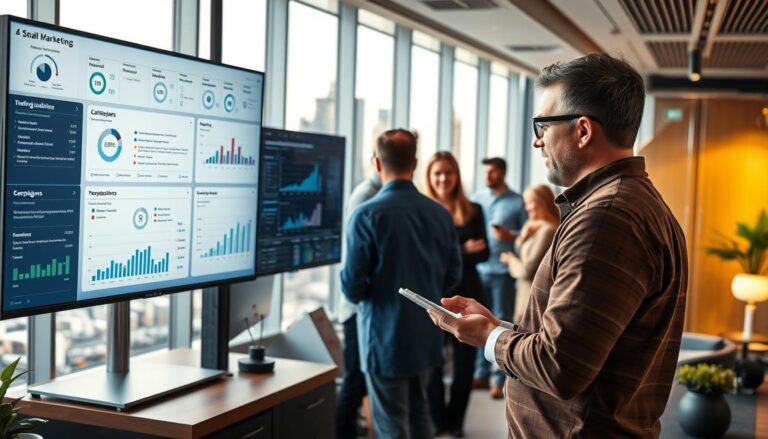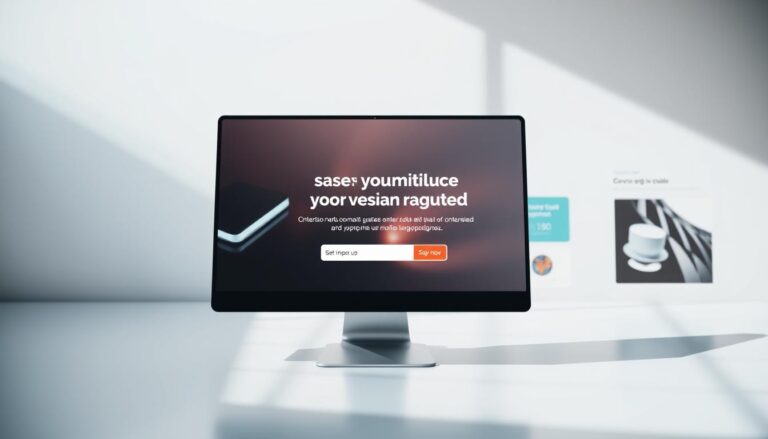The Conversion Psychology Secrets Big Brands Don’t Want You to Know
Most businesses spend a lot on fancy ads and long lists of features. But they often wonder why people look but don’t buy. The real reason is consumer psychology, not what the product can do.
Big companies like Fortune 500 spend millions to understand how people buy things. They know people don’t make choices based on facts. Instead, they open many tabs, compare a lot, and make emotional choices that they later try to justify with logic.
Studies show that using marketing to create a sense of urgency can lead to 60% of sales growth. Welcome emails get opened by 50-86% of people, beating out regular newsletters. These results aren’t just luck—they’re based on how people think and feel.
Small businesses can beat big companies by understanding how people make decisions. You don’t need a lot of money if you know what makes people act. Gamified experiences can make performance 30-50% better than old-school ads, showing that tapping into the right psychological triggers works.
The secrets of conversion psychology you’ll learn give you a big edge. While your competitors focus on what their products can do, you’ll be shaping minds.
Key Takeaways
- Consumer psychology drives purchasing decisions more than product features or logical comparisons
- FOMO marketing tactics contribute to 60% of sales growth for businesses that implement them correctly
- Welcome emails achieve 50-86% open rates, significantly outperforming standard newsletter campaigns
- Small businesses can compete with large corporations by understanding buyer psychology instead of relying on big budgets
- Gamified marketing experiences boost performance by 30-50% compared to traditional advertising methods
- Customers make emotional purchasing decisions first, then use logic to justify their choices afterward
The Hidden Science Behind Consumer Decision-Making
Every purchase is guided by a complex psychological framework. Consumer psychology reveals that buyers don’t make decisions based on logic. Instead, their choices are influenced by emotions, past experiences, and subconscious triggers.
It’s surprising that 95% of purchasing decisions happen in the subconscious mind before we even know we’ve made a choice. Traditional marketing often misses this. Knowing these hidden mechanisms can unlock persuasion secrets to boost your sales.
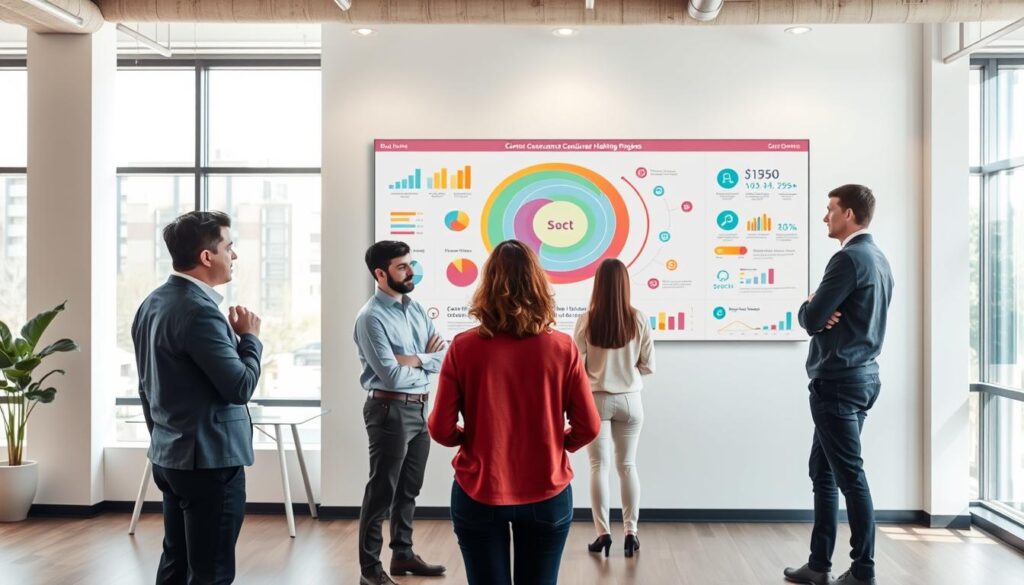
How the Brain Processes Buying Decisions
The brain processes buying decisions in three stages, all happening in milliseconds. The limbic system first checks if the product feels emotionally safe and desirable. Then, the prefrontal cortex tries to justify this emotional response. Lastly, the decision is filtered through personal values and social considerations.
This process explains why customers often can’t explain why they chose a product. They’re trying to apply logic to an emotional choice. Smart businesses focus on emotional triggers first, then provide logical reasons.
The Role of Emotions vs Logic in Purchases
Studies show that emotions drive 80% of purchasing decisions, while logic plays a smaller role at 20%. Yet, customers need both to feel sure about their choice. The best persuasion secrets mix emotional appeals with logical benefits.
Different people are driven by different emotions. Some fear missing out, others seek status, and many want security. Knowing what drives your audience helps you create messages that connect on a deeper level.
| Decision Factor | Emotional Weight | Logical Weight | Customer Response |
|---|---|---|---|
| Initial Interest | 90% | 10% | Immediate attraction or dismissal |
| Consideration Phase | 70% | 30% | Seeking emotional validation |
| Final Purchase | 60% | 40% | Need logical justification |
| Post-Purchase | 80% | 20% | Emotional satisfaction determines loyalty |
Scarcity and Urgency: Creating Immediate Action
Nothing speeds up decision-making like the fear of missing out. By using scarcity and urgency, you tap into our survival instincts. These psychological triggers make your offers hard to resist.
Our brains see scarcity as a threat. This ancient instinct affects how we buy today. Seeing limited offers makes your product seem more valuable.
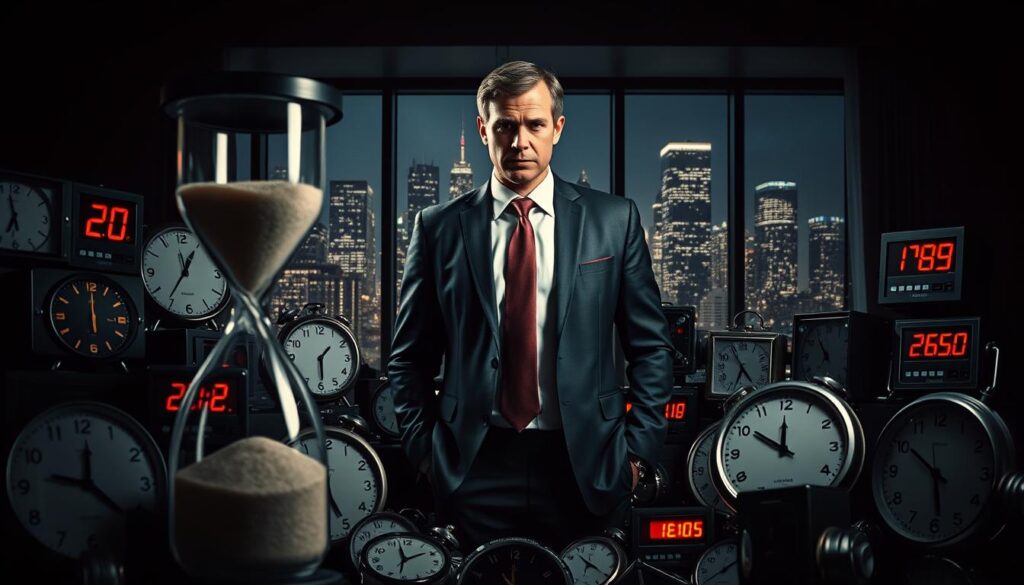
Limited-Time Offers That Actually Work
Good time-based offers create real urgency without feeling forced. Your deadline must be believable to customers. Studies show countdown timers can increase sales by 58% if done right.
Make your offers clear with specific end times and consequences. Use exact language like “Save 25% until midnight Friday” or “Early bird pricing ends in 72 hours.” This builds trust and keeps the urgency high.
Stock Countdown Psychology
Low inventory warnings prompt quick action by hinting at scarcity. Show real stock numbers when they’re low. Phrases like “Only 3 left in stock” or “2 people viewing this item” create a sense of competition.
Don’t use fake countdowns that reset. Customers spot these tricks and lose faith in your brand. True scarcity builds trust and drives sales.
Exclusive Access Strategies
VIP programs and member-only offers make customers feel valued and create urgency. Early access to sales, exclusive products, or limited memberships appeal to those who value status. These conversion tactics combine scarcity with social recognition.
Offer tiered access based on purchase history or engagement. Premium customers get first dibs on new products, while general customers wait for public release. This rewards loyalty and encourages immediate action from all.
Social Proof Manipulation Techniques
Consumer psychology shows that people trust what others say more than ads. Seeing others use and recommend products makes them 87% more likely to buy. This powerful effect helps companies make billions by using it well.
Social proof works because we naturally follow the crowd. Our brains see others’ actions as safe. If many are buying, it must be good.
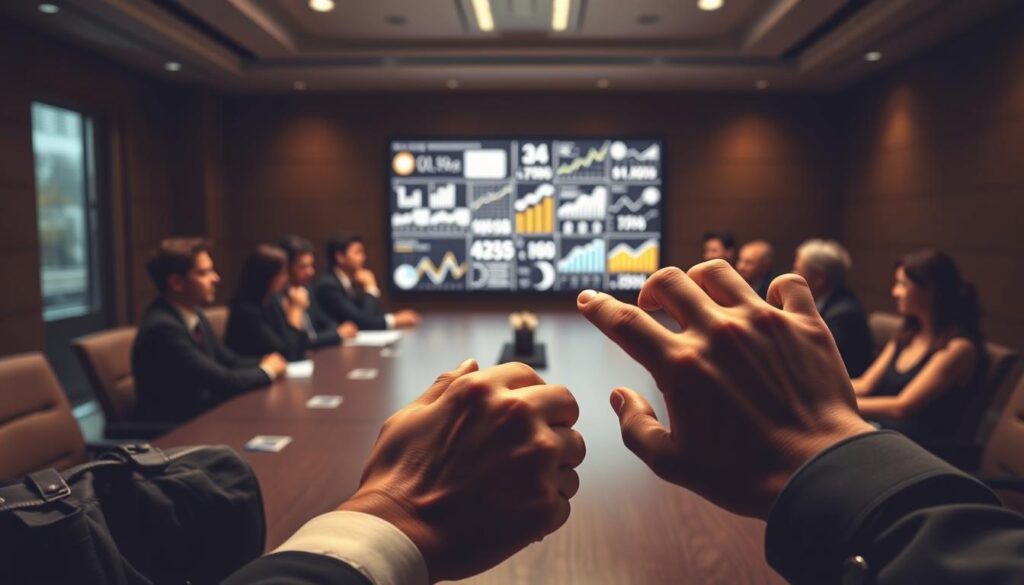
Customer Review Optimization
Placing reviews strategically can double your conversion rates. Put testimonials right above your call-to-action buttons. This builds trust when customers are about to buy.
Show specific numbers in reviews. “Increased sales by 40%” is better than “great results”. Detailed, measurable testimonials lead to stronger buying responses.
Influencer Endorsement Psychology
Influencer endorsements use authority bias. People trust experts’ recommendations. Pick influencers whose audience fits your target market perfectly.
Micro-influencers often beat celebrities. Their followers see them as more authentic and relatable. This builds deeper trust and boosts your campaign’s success.
Crowd Behavior Triggers
Real-time purchase notifications create urgency. Messages like “5 people bought this in the last hour” make us fear missing out. This secret works by showing demand.
Show customer counts clearly. “Join 10,000+ satisfied customers” uses the bandwagon effect. Big numbers show popularity and ease purchase anxiety for those who hesitate.
Conversion Psychology Secrets of Pricing and Anchoring
The best companies know that pricing is more than just numbers. It’s about changing how customers see value through psychological triggers. Customers don’t just look at prices. They compare them to what they think is fair.
This comparison opens big chances for smart business owners. By using price anchoring, you can make any deal seem unbeatable. This is done by setting the right starting points.
The Decoy Effect in Product Positioning
The decoy effect is a key conversion tactic for today’s businesses. It involves setting up three prices. The middle one looks much better than the others.
Here’s how it works. You offer a basic option for $50, a premium for $200, and a “decoy” for $180. The $200 option looks like the best deal because it’s better than the decoy.
Psychological Pricing Strategies
Smart pricing is more than just picking numbers. The psychology of pricing shows that certain prices trigger certain thoughts in customers.
Prices ending in 9 or 7 make things seem cheaper. Round numbers like $100 suggest high quality. Bundle pricing makes customers see the total value, not just the cost.
Anchoring High-Value Perceptions
Price anchoring starts with a high reference point. Saying “Normally $1,000, today only $197” makes $197 seem like a steal.
Bonus stacking makes this even stronger. Saying “$500+ worth of extras for just $97 today” sets up multiple value points. Customers see great value because they’re comparing to the higher prices you’ve set.
Color Psychology and Visual Persuasion Tactics
Colors and design on your website affect people’s minds and actions. Big brands spend a lot to learn how colors and designs influence consumer psychology. Your website’s look is like a silent salesperson, guiding visitors without them knowing it.
Smart businesses use these secrets to make their websites more engaging. The right colors, fonts, and layout can boost sales by up to 200%. Knowing these tricks helps you stand out in a crowded market.
Color Combinations That Drive Action
Different colors make people feel different ways, which affects what they buy. Red creates urgency and excitement, great for sale buttons. Blue is trusted and reliable, why banks use it.
Green means growth and positivity, good for eco-friendly brands. Orange is energetic and friendly, encouraging action without being too pushy. Choose colors that match what you want your customers to feel.
| Color | Psychological Effect | Best Use Cases | Conversion Impact |
|---|---|---|---|
| Red | Urgency, excitement | Sale buttons, clearance items | +21% click-through rate |
| Blue | Trust, security | Financial services, testimonials | +15% form completions |
| Green | Growth, positivity | Call-to-action buttons | +18% conversion rate |
| Orange | Energy, friendliness | Subscribe buttons, downloads | +12% engagement rate |
Visual Hierarchy for Conversion Optimization
Visual hierarchy guides visitors’ eyes to important parts first. Size, contrast, and positioning decide what catches their attention. Your headline should be the biggest, followed by subheadings and body text.
Using white space helps focus attention on key points. Bold text and colors highlight your main offers and calls to action. This method ensures visitors see your best offers first.
Eye-Tracking Patterns and Button Placement
Eye-tracking shows how people scan web pages. The “F-pattern” shows they read horizontally at the top, then down the left side. Put your most important elements where they naturally look.
Button placement greatly affects clicks. Buttons above the fold and in line with eye flow do 40% better than random ones. Tools like Hotjar and Crazy Egg help you see where to place your buttons for the best results.
Advanced Psychological Triggers for Higher Conversions
Top conversion experts use psychological triggers that tap into deep human drives. These advanced methods help marketers influence decisions at a subconscious level. By mastering these techniques, you can deeply impact your customers’ choices.
The best conversion strategies work because they match how our brains process information. Customers don’t always make choices based on facts. Instead, they rely on mental shortcuts and emotions that smart marketers can influence.
Loss Aversion and Fear-Based Marketing
People fear losing more than they desire gaining. This bias, known as loss aversion, is a key persuasion secret in marketing. Frame your offers to show what customers will lose by not acting.
Instead of saying “Gain 20% more efficiency,” say “Don’t lose 20% of your productivity.” This activates the brain’s loss prevention system. Customers will feel a stronger urge to act when they see inaction as a loss.
Fear-based marketing works when it’s real and focused on solutions. Highlight real consequences of not acting, then offer your product as the solution. This creates urgency without feeling forced.
Reciprocity Principle Implementation
The reciprocity principle says people feel obligated to return favors. Give something valuable first, and customers will want to buy. This is a powerful psychological trigger for conversion.
Give genuine value before asking for anything. Free resources, advice, or insights build reciprocity debt. Customers will feel compelled to “pay you back” with purchases or referrals.
Effective strategies include free trials, valuable content, personal consultations, or exclusive access. Make sure your free offer genuinely helps your audience. Consider using SMS popup examples for immediate value.
Authority and Credibility Signals
Authority shapes attention, pricing power, and trust more than anything else. When customers see you as an expert, they make faster decisions and pay more. Building visible authority is a key persuasion secret.
The halo effect means expertise in one area implies competence in others. This allows authority figures to influence decisions across multiple areas.
Expert Testimonials and Certifications
Display testimonials from recognized experts on your website. Industry certifications and credentials are instant credibility markers. They bypass the need for lengthy explanations of your qualifications.
Media Mentions and Awards
Media coverage and industry awards create strong social proof. Feature logos of publications that have mentioned your work or awards you’ve received. These endorsements carry more weight than self-promotion because they represent external validation.
Conclusion
These conversion psychology secrets are more than just tactics. They form a complete framework for understanding what drives your customers. They help you see how they make decisions.
Start by adding one psychological trigger at a time. If you sell physical products, try scarcity first. For service industries, focus on social proof. The type of your business will tell you which strategies work best.
Top brands don’t trick customers. They meet their psychological needs better than others. By showing you understand where customers want to be, you connect with them on a deeper level.
Psychology isn’t just about tricks. It’s a way to see every interaction with customers in a new light. Every email, product page, and sales talk is a chance to meet real psychological needs.
Your next move is clear. Pick one technique from this guide. Use it everywhere in your marketing. Then, see how it works. After that, move on to the next psychological principle.
The secrets of conversion psychology will grow over time. Small changes can lead to big improvements in your business. Just keep applying them consistently.

